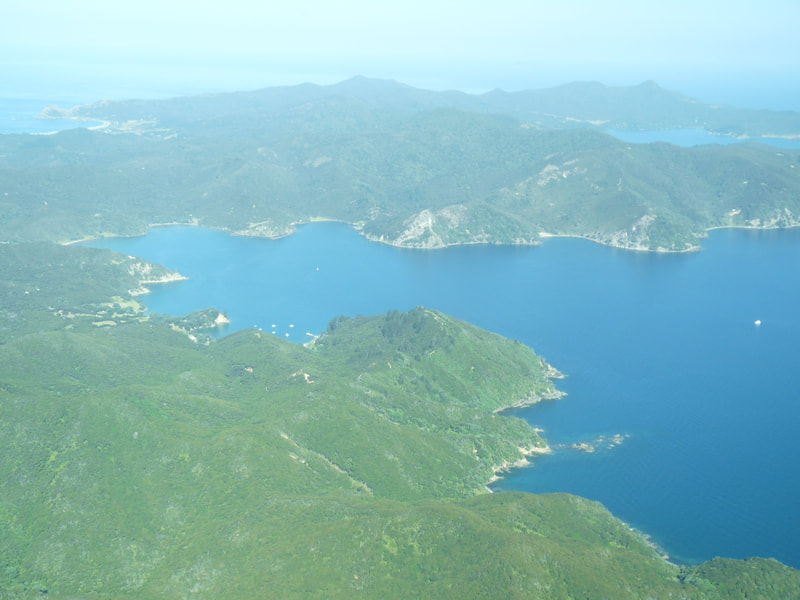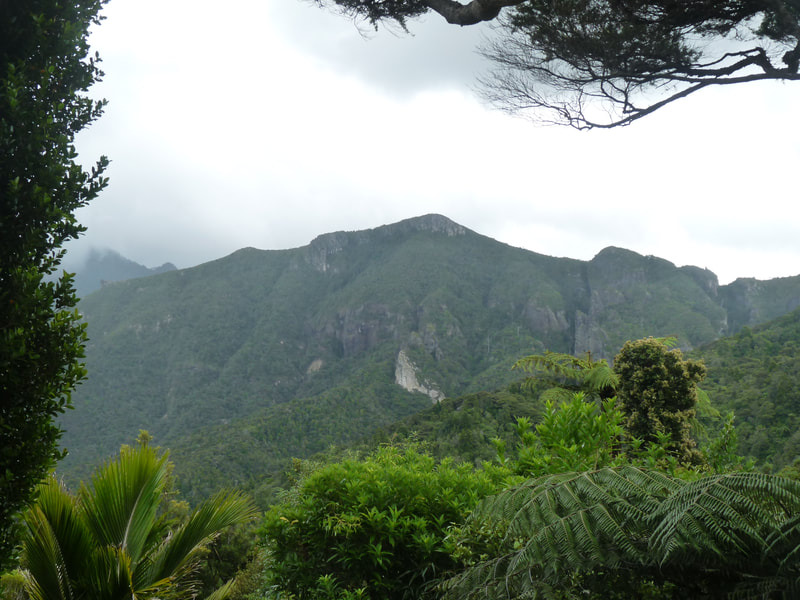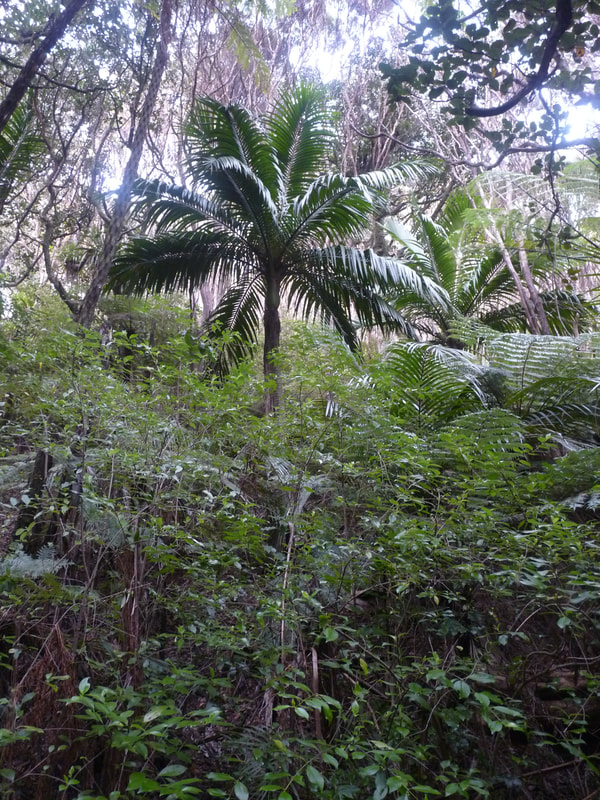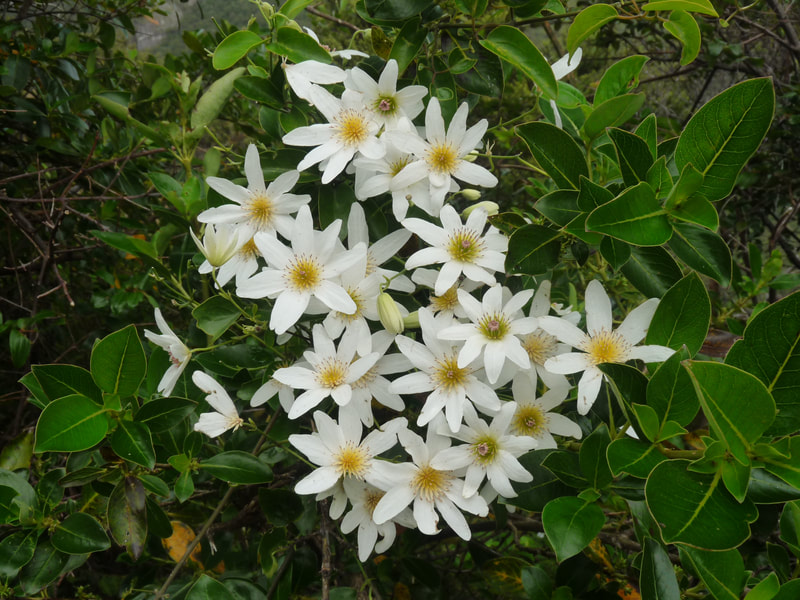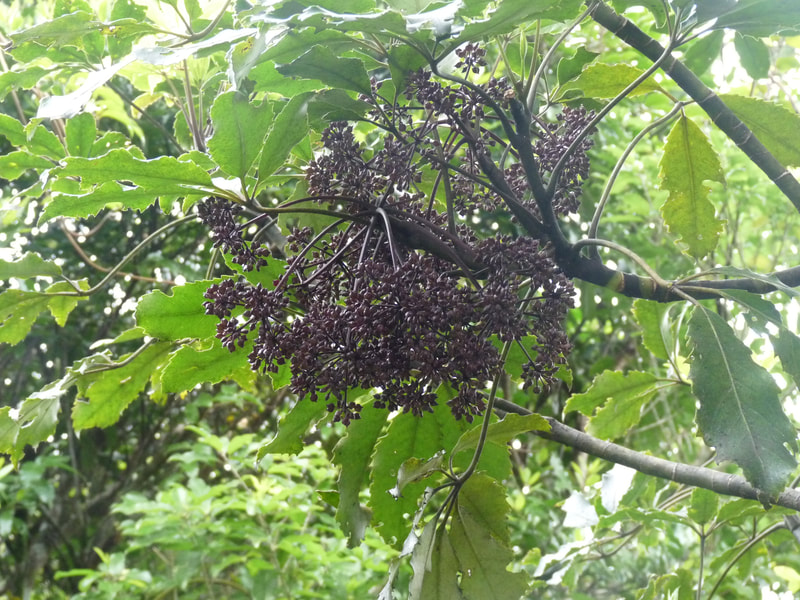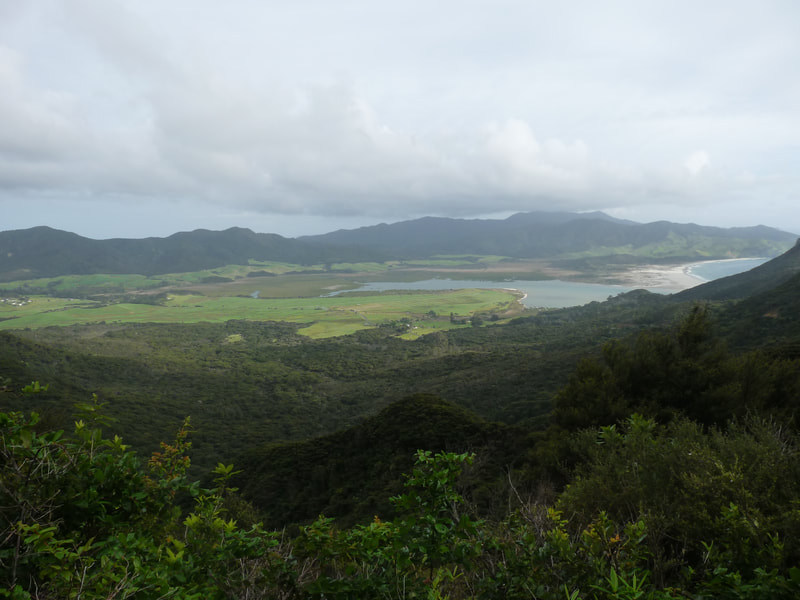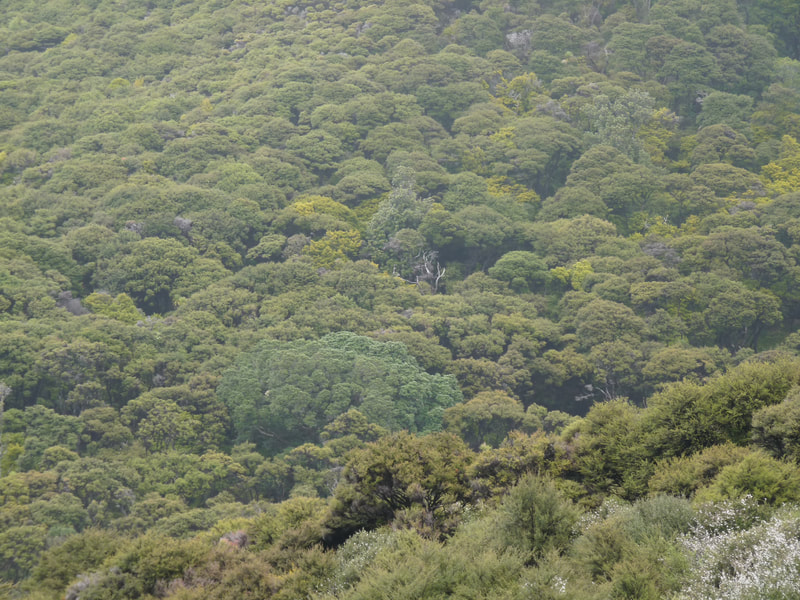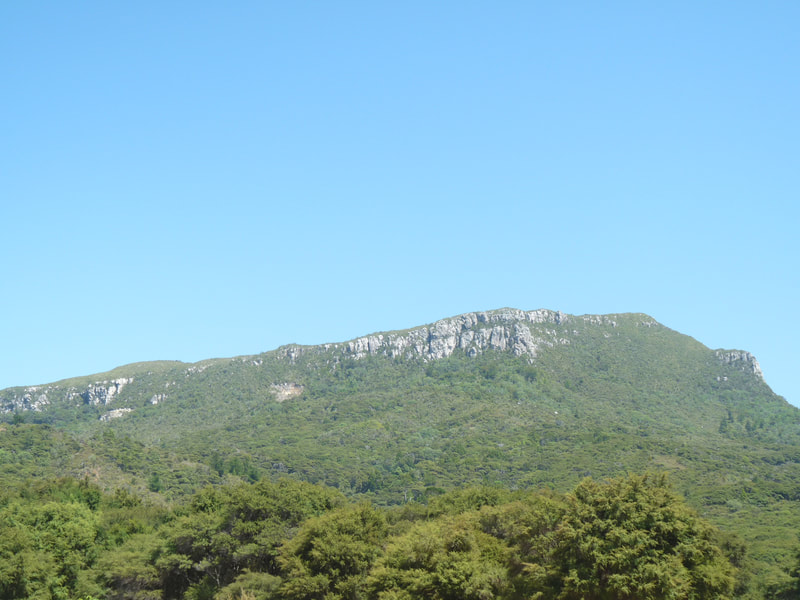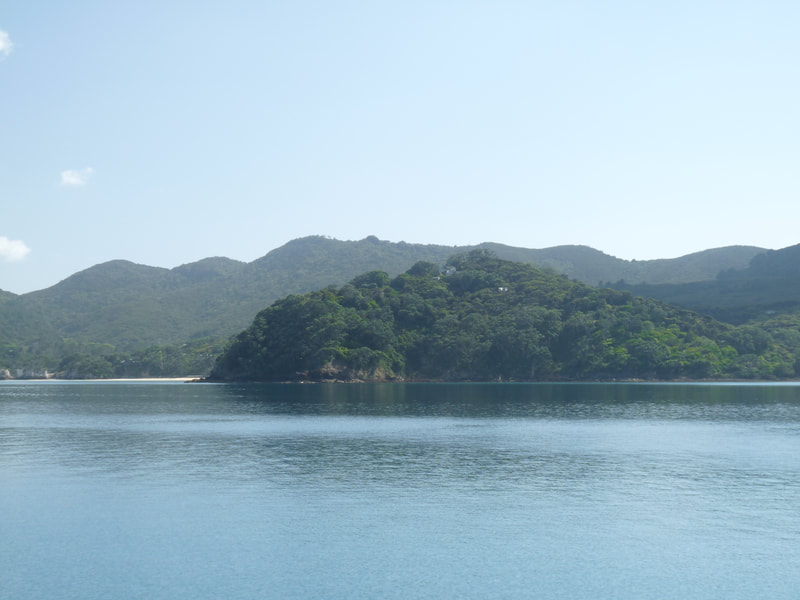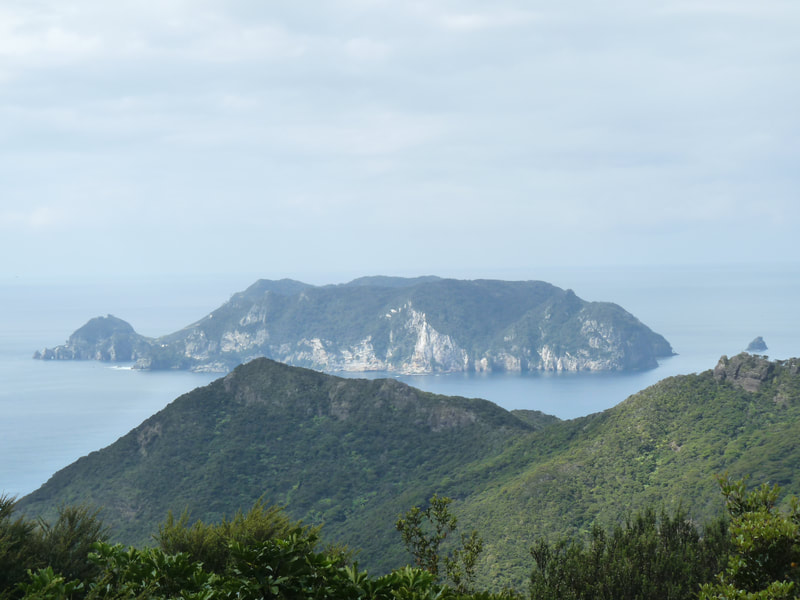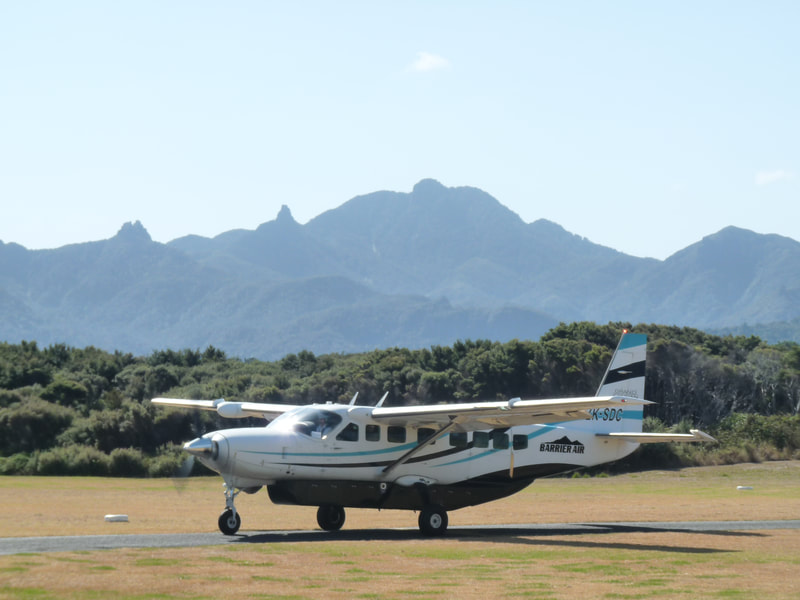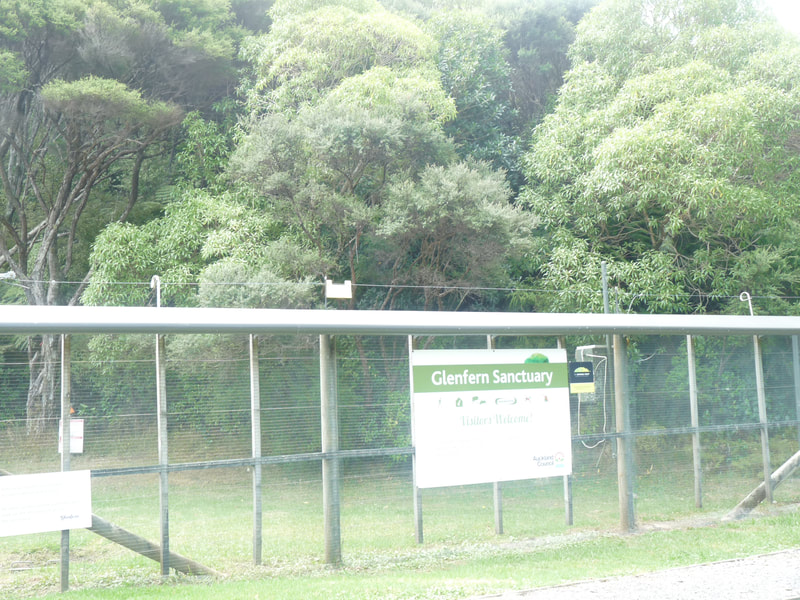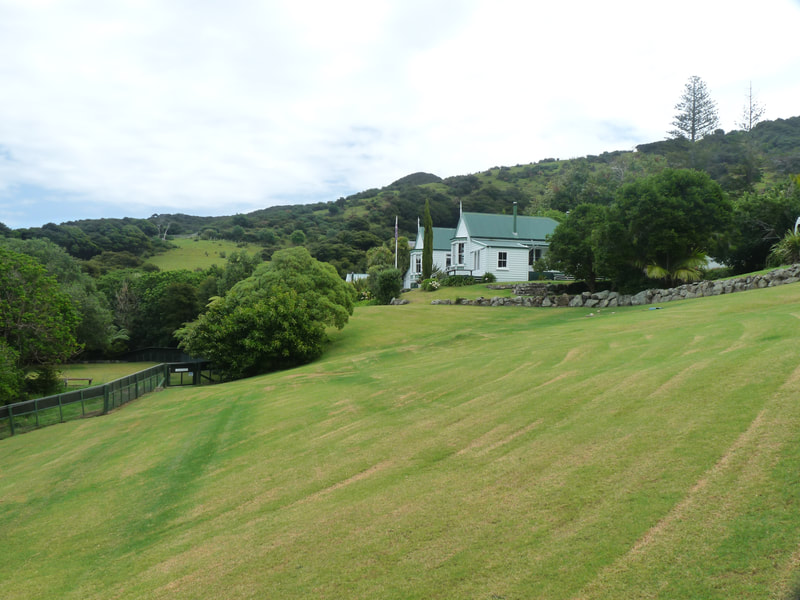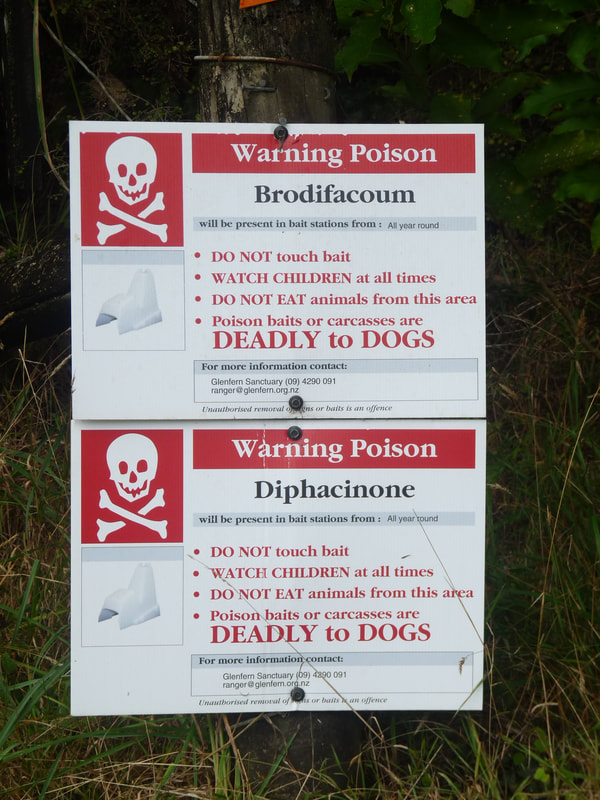Rugged And Remote
|
Guarding the eastern edge of Auckland's Hauraki Gulf, Captain Cook named this island Great Barrier. Maori know it as Aotea. To the west, its sister island, Hauturu Little Barrier, stands as a sentinel at the northern extent of the Gulf.
Both islands were built by ancient volcanos, both have rugged interiors and both are home to critical populations of rare and threatened species. However, only Hauturu Little Barrier is free of mammalian predators and was New Zealand's first nature reserve. In contrast, Aotea Great Barrier is actually an extension of the Coromandel Peninsula cutoff by rising seas after the last ice age. Aotea Great Barrier is the fourth largest of New Zealand's main islands and sixth largest in the New Zealand archipelago. Just a 30 minute flight from Auckland, this off-grid island is home to nearly 1,000 people who enjoy a lifestyle from a slower time in a place they call "A world of its own". |
Predator Eradication Project
|
Island Size
Large 285 sq.km |
Target Predators
Black rats Feral cats |
Eradication Methods
Undecided |
Project Stage
Pre-eradication |
Visited
February 2019 |
Aotea Great Barrier Image Gallery
Click on an image to see a larger view with caption.
Read more about predator eradication on Aotea Great Barrier below.
Read more about predator eradication on Aotea Great Barrier below.
Predation On Islands
Before Humans
Prior to the arrival of humans, the New Zealand archipelago was a land dominated by forest and filled with birds and reptiles. The only mammals were small bats that ate insects.
New Zealand's biota demonstrates evolution in isolation after New Zealand separated from Gondwana 80 million years ago and from Australia 60 million years ago.. The native flora and fauna shows high levels of endemism as many species occur nowhere else. It shows island gigantism as many species have evolved larger body sizes and many birds also became flightless. Some birds evolved striking dimorphisms, especially the huia where males and females had markedly different bills they used to feed co-operatively.
Mammal Introductions
Aotearoa New Zealand was one of the last pieces of habitable land on Earth discovered by humans. Polynesian settlement occurred from around 1300 followed by European settlement from about 1800. Into this avian paradise humans introduced mammals as predators and competitors of the unique native biota.
The first mammalian predators were humans themselves. Within two centuries, overhunting caused the extinction of moa, including the tallest species of bird that ever lived. Haast's Eagle, the largest eagle on earth, was also hunted, but was probably most affected by habitat loss from the burning of forests and the loss of its prey. Polynesian migrants also brought kiore (Pacific rat) and kuri (Polynesian dog) as food, and they used kuri to hunt birds. Kiore drove extinctions of small birds, native frogs and mainland populations of tuatara.
After the European rediscovery of New Zealand in 1769 the pace of mammal introductions increased. Norway (brown) rats established in the 1700's, ship (black) rats arrived in the 1860's, rabbits were introduced for food and sport and possums for fur, then stoats, ferrets and weasels were introduced to control rampant rabbit populations. Hedgehogs were introduced to eat garden pests and pet cats established feral populations. Captain Cook liberated goats and pigs then acclimatisation societies introduced a range of deer, chamois, and thar..
Prior to the arrival of humans, the New Zealand archipelago was a land dominated by forest and filled with birds and reptiles. The only mammals were small bats that ate insects.
New Zealand's biota demonstrates evolution in isolation after New Zealand separated from Gondwana 80 million years ago and from Australia 60 million years ago.. The native flora and fauna shows high levels of endemism as many species occur nowhere else. It shows island gigantism as many species have evolved larger body sizes and many birds also became flightless. Some birds evolved striking dimorphisms, especially the huia where males and females had markedly different bills they used to feed co-operatively.
Mammal Introductions
Aotearoa New Zealand was one of the last pieces of habitable land on Earth discovered by humans. Polynesian settlement occurred from around 1300 followed by European settlement from about 1800. Into this avian paradise humans introduced mammals as predators and competitors of the unique native biota.
The first mammalian predators were humans themselves. Within two centuries, overhunting caused the extinction of moa, including the tallest species of bird that ever lived. Haast's Eagle, the largest eagle on earth, was also hunted, but was probably most affected by habitat loss from the burning of forests and the loss of its prey. Polynesian migrants also brought kiore (Pacific rat) and kuri (Polynesian dog) as food, and they used kuri to hunt birds. Kiore drove extinctions of small birds, native frogs and mainland populations of tuatara.
After the European rediscovery of New Zealand in 1769 the pace of mammal introductions increased. Norway (brown) rats established in the 1700's, ship (black) rats arrived in the 1860's, rabbits were introduced for food and sport and possums for fur, then stoats, ferrets and weasels were introduced to control rampant rabbit populations. Hedgehogs were introduced to eat garden pests and pet cats established feral populations. Captain Cook liberated goats and pigs then acclimatisation societies introduced a range of deer, chamois, and thar..
|
Aotea Great Barrier
Being a large island formed by rising sea levels only 10,000 years ago the native plants and animals of Aotea Great Barrier have attributes of both the mainland and islands. Aotea Great Barrier supported the only island population of North Island kokako, one of five species of wattlebirds that are an endemic family of songbirds. The island is also the principal nesting site of black petrels that range far out into the Pacific Ocean to feed. The island also supports a diverse lizard fauna of 13 species, native bats are present and a population of Hochstetter's frog is the only known island population of this species. Aotea Great Barrier Island now supports black rats, kiore, mice and feral cats. Wild pigs will also be predators of large land snails. In contrast, the island does not have brown rats, hedgehogs, possums or any of the three species of mustelids (stoats, ferrets, weasels) established in New Zealand. Goats have been removed by hunting. |
Island Extinctions
Over the past 150 years, naturalists have published records of the birds they have found on Aotea Great Barrier, first in 1868 then again in 1964 and 1981. The 1981 list recorded 63 bird species and identified three other seasonal migrants. Compared with records from 1868, six species of birds had definitely become locally extinct and at least another five species had probably become locally extinct. Almost half of the original native bird species breeding on the island were endemic and nine, or 38% of those are now locally extinct. The 1981 survey compared this to the 19% of endemic bird species on the New Zealand mainland that had become endangered or extinct. Islands support fewer species than mainlands, and populations are often smaller so island ecologies are more susceptible to predation impacts. Wildlife are more vulnerable, local extinctions more frequent and the loss of species has greater proportional impacts. |
Species LostIn the 150 years since the first records of the birds of Aotea Great Barrier were published the island's birdlife has undergone significant changes. Predation by invasive mammals has been a critical driver of these changes.
Birds that are now locally extinct include whitehead, North Island robin, stitchbird, North Island saddleback, and shore plover. New Zealand quail became an extinct species around 1875. On Aotea Great Barrier yellow-crowned parakeet, pied tit, rifleman and bellbird are probably also now locally extinct. North Island kokako were evacuated from the island before they were lost. New Zealand brown teal, pateke, and probably North Island kaka have gone the other way and today the island is a stronghold for these species, along with banded rail, although pateke have declined over the past 30 years. These species, along with black petrel and Cook's petrel, are susceptible to feral cat predation, however the absence of brown (Norway) rats and especially mustelids is probably a big factor in the survival and expansion of these populations. Different species do show different susceptibility to predation but a multi-predator onslaught over generations is often a one-way path to extinction. |
The Lighthouse Keeper's CatAn oft-told tale of island extinction caused by predation is the story of Stephens Island wren. Supposedly the lighthouse keeper's cat brought home a previously unknown small flightless wren then hunted it to extinction.
Stephens Island / Takapourewa stands at the western entrance to Cook Strait north of D'Urville Island. Previously bush clad it was home to several species of birds that are now extinct including the flightless Lyall's wren. Subfossils show this bird lived widely across New Zealand but live birds were only known from Stephens Island. When a lighthouse was built on the island in the 1890's a pregnant female cat escaped ashore and started a colony of feral cats. These did catch wrens but likely more than one cat was killing them. Clearance of the forest and the exploits of collectors supplying birds to the lucrative London natural history market also played a part but historical research concludes that cat predation was the main factor in the wren's extinction. Only 15 Lyall's wren exist in museums worldwide and probably 10 of these were brought in by the cat. Today the cats are gone, the bush is gone, the lighthouse remains and Stephens Island is a stronghold for tuatara helping to ensure these do not follow the flightless Lyall's wren towards extinction. |
|
Copyright © Synovus Technology 2018 - 2023
All Rights Reserved |


